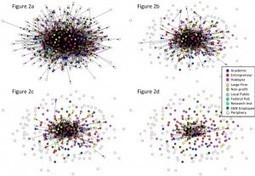Uh-oh! Another big bank is the subject of a depositor run amid charges its chairman has run off with customers’ money. Thankfully, this scandal is only taking place in Eve Online, a space-age virtual reality created by CCP, a games developer and Iceland’s coolest company. But Ebank’s troubles in the ether may offer some valuable lessons for earthly banking and regulation.
Eve is one of the more successful so-called massively multiplayer online games. Some 300,000 people – as it happens, nearly equal to the population of Iceland – pay $15 a month to navigate characters that pilot inter-galactic spaceships, manufacture and trade goods, mine resources and enter into big alliances – or bloody battles – with one another.
Central to Eve’s strategy, players develop economies within an “anything goes,” free markets framework that allows them to expand their fleets, buy weaponry and equipment and bolster defences. Indeed, Eve boasts 66 different marketplaces for some 5,000 items, with more than a million transactions a day.
Enter Ebank. Because players often do not have the interstellar credits – abbreviated to ISK, also the official abbreviation of the Icelandic krona – they need to expand their fleets, an enterprising player created a bank that would accept deposits and lend to players who would pledge assets, like their spacecraft, as collateral.
Via www.telegraph.co.uk
EVE Online offers lessons for the financial crisis
Ultima Returns as Browser-Based F2P MMO Strategy Game
Electronic Arts and Aeria Games have jointly announced the launch of Lord of Ultima, a new addition to the Ultima franchise that can be played within a browser.Following the successful launch of Battlefield Heroes and Need for Speed World, Lord of Ultima is the latest, and third, title Aeria Games has released from its multi-game deal for EA’s portfolio of Play4Free games.”Set in the legendary Ultima universe, the game transports players to the new world of Caledonia where players aim to grow their capital on the path to glory,” reads the description. “By exploring new continents and forging a vast empire, players will master the art of diplomacy and trade as well as the military activities of spying, plundering, and conquering enemy cities. Players can mark their place in history by attaining the mighty and feared status as Lord of Ultima.”
Via www.tomshardware.com
Aussie R18+ legislation aiming for Jan. 2013 introduction
Australian gamers can expect to have an R18+ classification for games by January 1, 2013, according to the federal government.Federal Minister for Home Affairs Jason Clare today introduced the R18+ bill in parliament and announced the federal government expects the R18+ for games legislation to officially come into effect next year.Last month, Clare announced his intention to stick to former Federal Minister for Home Affairs Brendan O’Connor’s previous plans in introducing the R18+ legislation in the February 2012 session of parliament.Clare has stayed true to this plan, officially introducing the R18+ for games bill in parliament today.
Via au.gamespot.com
Credit card thieves target OpenSim grids

Credit card thieves have figured out a way to steal money from OpenSim grid owners.
They take the credit cards, and use them to purchase virtual currency from the grids. Then they turn around and redeem the currency for cash before the card holder notices the theft and complains. The credit card company reverses the transaction and now the grid is out the full amount — plus the time spent dealing with the issue.
Any grid that issues its own virtual currency and allows it to be redeemed is potentially vulnerable. Second Life, for example, to combat against this kind of fraud, has a security API in place for third-parties that trade its currency, such as outside currency exchanges, as well as internal controls.
Via www.hypergridbusiness.com
Academic Research Paper on OpenSim Community
While the nature of the firm has long been established as the dominant form of organizing for value creation, emergent forms of organizing such as the private-collective community model have recently gained attention from researchers and practitioners. Little is known about how such communities, where private goods from stakeholders are shared and freely distributed among a public collective, sustain themselves. The purpose of this research is to examine how the resources, stakeholders, and overarching network structure in which these are embedded influence the sustainability of the community. Using semi-structured interviews, archival data, and social network analysis, we explore these items in detail and provide initial findings from an ongoing research study of the OpenSim community. We conclude with future directions, expected contributions, and the limitations of this line of research.
Via nordicworlds.net
Virtual reality contact lenses beam images directly into your eyes
Contact lenses which focus 3D screens directly into people’s eyeballs could be on sale as early as 2014, says U.S. company Innovega.
The tiny ‘screens’ sit directly on users’ eyeballs and work with a pair of lightweight glasses with a built-in translucent screen.
The experience is equivalent to a 240-inch television viewed at a distance of 10 feet, says Innovega’s CEO Steve Willey.
Via www.dailymail.co.uk
Virtual dummy makes designing clothes easy
Creating the pattern for a new dress design can be fiddly, so Amy Wibowo at the University of Tokyo, Japan, is using augmented reality to make it simpler.
Six ceiling-mounted cameras are trained on the dummy and on two tools held by the designer, one for creating surfaces and other for cutting them. The tools and the dummy both have markers, so the cameras can work out where in 3D space they are relative to each other. As the designer draws and works on and around the physical mannequin, this shows up on a virtual onscreen version.”The idea is to make it easy for people to design clothes,” says Wibowo. Usually you have to choose set patterns, which is limiting, she says. What’s particularly difficult is working out what 2D shapes are needed in order to achieve a particular 3D design.Her approach, called DressUp, gets round this by using “flattening” algorithms to work out the best shaped patterns to achieve the 3D design. Then you just print it out and cut around the patterns in the material of your choice, she says.
Via www.newscientist.com
Second Life’s greatest strengths are also its greatest weaknesses
If I were to make a list of the top three things that are responsible for Second Life being as great as it is – and that is exactly what I’m doing today – it would read equally well as a list of things that hold Second Life back.
Via dwellonit.taterunino.net
LEGO Universe is shuts up shop
The clock is chiming, and kids (and the young at heart) everywhere are asking for just a little more time with LEGO Universe. Unfortunately the struggling MMO has gotten no reprieve from the imaginary video game governor, and its servers will go offline tonight at midnight EST.
Via massively.joystiq.com
Litigating Trademark And Copyright Cases In The Metaverse | The Metropolitan Corporate Counsel
In Neal Stephenson’s 1992 science fiction novel, Snow Crash,[1] humans battle each other as avatars in the “Metaverse,” the collective product of online shared three‑dimensional space.[2] While Stephenson’s “Metaverse,” created by all virtual worlds as an augmented and enhanced physical reality and a physically persistent virtual space, does not exist today, millions of humans each year spend hours of their daily lives immersed in a three‑dimensional virtual world, fighting world wars, battling mythical creatures, living fantastic lives or running virtual businesses. Simply put, Stephenson’s science fiction view of future commerce in the Metaverse has become reality.As Stephenson envisioned, intellectual property is an important part of the virtual landscape. The current role of intellectual property in virtual reality demonstrates the promise and problematic nature of this new and different business world. This article will highlight some of the concerns and complexities that have been raised by recent cases of note regarding protecting one’s intellectual property in virtual worlds.[3]Recent cases, involving such diverse subjects as virtual art galleries,[4] sex toys,[5] stun guns,[6] strip clubs,[7] horses and bunnies,[8] and furniture,[9] highlight the legal issues and differences between virtual reality and real-life infringement cases. A review of these cases gives one insights with respect to protecting intellectual property assets in the world of avatars.
Via www.metrocorpcounsel.com
- « Previous Page
- 1
- 2
- 3
- 4
- 5
- …
- 8
- Next Page »









Recent Comments